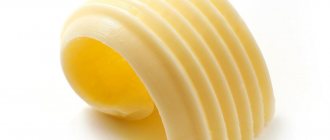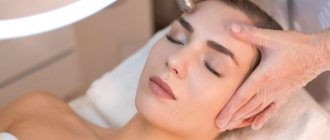The beneficial properties of olives have been known for a long time.
Even in the time of Homer, this product was valued and used both internally and externally, and was called yellow gold. A lot of time has passed, but beauties still use olive oil in cosmetology. The properties of olive oil are so diverse that it is used in products for hair, face, eyelashes, and eyebrows.
History of the olive product
Trees with valuable berries have been known since the times of Ancient Greece. For a short period, olive fruit was used to pay for goods and services.
At first, olive liquid was used after bathing procedures or physical exercise to rub the entire body to give it a noble, well-groomed appearance.
Then the beauties noticed that the face, neck and décolleté are exposed to sunbathing more than other areas of the body, and began to prepare special solutions based on the oil for smoothing, moisturizing and massage.
The pleasant smell of olive has also been used in aromatherapy.
general description
Unlike many other oils used in cosmetology as base oils, olive extract is not extracted from the seeds, seeds or nuts of the plant, but directly from the fruit. That is, it is a kind of concentrated juice from the pulp of olives.
For the best quality of the future product, it is advisable to harvest the berries by hand, but on an industrial scale, special equipment is used.
The fruits of the olive tree must be processed within a few hours so that they do not lose their best properties.
In production, olives are washed and crushed to a paste-like state without the use of high temperature - by cold pressing. In a centrifuge, the oil is separated from the cake and water, and then left to infuse.
About a couple of weeks after this, it is bottled, with labels labeled Extra virgin or Virgin. The first mark indicates that this is a natural product with acidity up to 0.8% and excellent taste. Virgin olive extract has slightly worse tasting properties. But he is also natural.
In addition, there are such types of olive oils: for
- Pure olive oil or Olive oil is a mixture of purified and natural extracts from olive fruits;
- Olive-pomace oil is an extract from the cake left after obtaining Extra-virgin oil. Sometimes it is mixed with natural oilseed concentrate. Such a product is produced using kerosene and heat treatment of raw materials;
- Lampante oil is an industrial oily liquid not intended for food.
Depending on the variety of olive berries, the oil can have a color from yellowish to brown, with green tints. There is a bitterness in the taste. The aroma is characteristic oily, but not intrusive. When stored in cold conditions, olive fruit extract produces sediment.
By the way. The taste of the oil differs depending on the country of origin. Olive extract from Spain is sharp and slightly bitter. Italian is soft, sweetish, and Greek has honey and fruity notes.
Chemical composition
The cold-pressed olive product retains all the valuable nutrients necessary for a person to maintain and maintain health. Olive provides a whole bunch of vitamins (A, K, E, B), triglycerides and flavonoids, essential fatty acids.
Regular use of oil in food can protect the body from free radicals that “allow” cancer diseases into the body, prevent problems with the heart and blood vessels, stop inflammatory processes in the dermis, and have a general immunostimulating effect.
Contraindications
Olive oil against wrinkles may not be suitable for everyone. In particular, people with oily skin should avoid this product. It can also aggravate the condition of the problematic epidermis. If pimples and blackheads occur, their number may increase.
Olive oil for eyes against wrinkles should not be used by people with vision problems, because the product may get into the eyes. Contraindications include inflammatory processes in the mucous membrane, conjunctivitis, barley and other ailments.
Types of squeeze
It is considered important to collect ripened olives by hand, so that the valuable product does not receive mechanical damage, which means it will retain its valuable properties until the processing process.
The beginning of olive harvesting is determined by the degree of their ripeness, and the soil under the trees is covered with a special material to prevent “injury” to the ripe berries from falling.
The collected fruits are processed on the same day. First, they are dried and separated from wood inclusions, then sorted in accordance with varietal characteristics.
After this, the olives are ground in special stone millstones to obtain a mass, from which the fatty product will then be separated.
The cold pressing method, which has come down to us from our ancestors, is a simple squeezing of the olive mass. The resulting oily liquid contains a certain amount of water, which is removed from the oil by settling due to the difference in density.
In the 21st century, the technology has been improved. Now you can separate the water from the oil in a special centrifuge.
The cold (first-pressed) product is carefully checked for quality indicators and filtered. The resulting cake, through heating and the use of chemicals, becomes the raw material for obtaining an inexpensive refined product. This is a secondary spin.
The third squeeze, the residual one, is called the pomace.
How to select and store a product
The rules for choosing olive oil for skin are the same as when purchasing other food products.
- Today's date and production date should be as close as possible to each other.
- The most useful product is the first pressing. It is designated as "virgin" or "extra virgin". This is an olive liquid of the highest quality, retaining all the healing power of nature. Yes, it costs more than the refined one, but the money spent will return to you with freshness and youth.
- Good olive oil is always packaged in dark glass containers. This foresight of manufacturers will protect the valuable product from the destructive effects of sunlight if for some reason the container ends up in a well-lit place.
- The shelf life of the olive product expires six months after production. After this period, it can be used as food, but it will no longer contain the full amount of nutrients and vitamins. They break down over time.
- “Liquid” gold should be stored in a dark place at a temperature no higher than 20°C.
- The Greeks are considered the best producers of olive oil, because they keep and pass on from generation to generation the secrets of growing and obtaining this most valuable product. See country of origin on label. Must indicate Made in Greece.
Experts' opinion
Cosmetologists and beauty experts do not deny that olive oil has many positive properties.
At the same time, experts advise adhering to the rules for using olive extracts, otherwise the benefits will turn into harm.
Also, you should not replace your usual skin care products with olive extract.
Recipes for use
There are a great many recipes for using olive oil in cosmetology at home. In different countries, they differ in the additional components available for use in that particular region. At home you can make lotions, creams and scrubs.
Masks and lotions are prepared for one-time use. These mixtures cannot be stored. You can add different components, but no more than 5. The masks harmoniously combine both plant ingredients and animal products.
Lotions for the skin around the eyes
Signs of aging such as bags under the eyes or crow's feet can be reduced by regularly rubbing olive oil on your face.
To do this, just apply 1-2 drops of olia on a cotton pad and wipe the problem areas with light hovering movements from nose to ear, and then remove excess. The skin under the eyes is the thinnest on the face, so here, more than anywhere else, delicacy is necessary.
Olive oil to moisturize dry skin
When applying olive to dry skin, it is important not to overdo it. It may seem that if you apply more substance to the flaky areas, the skin will recover faster. It's an illusion. Even dry skin cannot absorb a large amount of an oily mask.
It is better to blot off any excess with a damp towel.
Dry skin can be “fed” 30 minutes before bedtime, apply a little oil, let it absorb and not rinse off.
Olive oil for oily skin
Skin prone to oiliness is wiped in the same way as dry skin. However, first you should take care of thoroughly cleansing it of impurities: wash, wipe with an appropriate tonic, and only then smear your face with olive oil.
Excess olive oil is immediately removed by blotting with a paper towel or napkin.
For sensitive skin care
A mask made from cucumber, banana and 2 tbsp will be a beneficial balm for delicate skin. olive oils. Grind a fresh cucumber, add half a banana and oil, mix thoroughly and apply to the face for 25 minutes.
For chapped and chapped lips
- Pure oil applied for 3 minutes can save “silvered” lips from cracking. Immediately after spreading, cover your mouth with a paper napkin.
- If you mix 1 tablespoon of olive and 1 teaspoon of sugar, you can get rid of flakes of dead skin from chapped areas. Daily use of this mini-mask of olive oil for lips will not harm.
To remove makeup
Olive oil is used in facial cosmetology as a makeup remover.
- You can remove makeup with pure olive oil. Apply a thin layer of it to your hands, rub your face with them, and then apply your palms to your eyes for 10-15 seconds. Then wipe the face with a cotton pad or paper napkin.
- If you only need to wash your eyelids, then moisten a cotton pad with olive oil and wipe your eyes from the nose to the ears in semicircular movements.
- A mixture of three esters: olive, almond and castor (1:1:1) is heated in a water bath for a quarter of an hour and allowed to cool. And then they use it to remove makeup instead of ready-made store-bought products.
Cleansing scrub
- A recipe with sea salt will help to smooth the surface of the skin, clean it of impurities and polish it. Olive oil is added to the salt so much to form a semi-liquid mass. It is then applied to the face with careful movements to avoid scratches from particles of sea sand contained in the salt. Gently rub your face with your fingers and rinse with warm water. It is important to remember that sea salt must be finely ground and not contain large particles or dyes.
- Oatmeal will provide gentle cleansing. 2-3 tablespoons of ground oats are mixed with 1 teaspoon of olive oil and brought to the consistency of thick sour cream with the help of water. Massage the face with this mixture for 2 minutes, and then rinse with chamomile decoction to close the pores and soothe the skin.
Anti-aging mask
- Carrot and lemon juice, sour cream or yogurt, dry yeast and oil are mixed in equal parts and applied for 15 minutes. This recipe is suitable for tired, aging skin, it will help restore normal tone and moisturize.
- A mask made from cucumber juice, fine sea salt, mineral water, olive and rose oil provides a powerful rejuvenating effect. Mix cucumber juice with mineral water (4 tablespoons each), add a small handful of salt, let it dissolve. Then add both oils to the mixture and stir. Transfer the resulting mass into a glass container and store in the refrigerator. This mask is applied 3 times a day and kept for 15-20 minutes. It is quite capable of replacing an expensive moisturizer.
Whitening mask
A mask made from cottage cheese, milk, carrot juice and butter, taken in equal proportions, will help give your skin a snow-white tint. All products are mixed well and applied in a thick layer to the face. You need to leave the mask on for half an hour, then rinse with warm water and finish washing with cold water.
Toning and nourishing mask
It is preferable to do this type of mask before bedtime.
- 2 teaspoons of white clay are combined with olive product until sour cream is thick. After this, apply to the face and allow to harden. Then rinse with warm water and apply night moisturizer.
- Olive oil in the amount of 2 tablespoons is mixed with 1 tablespoon of grape seed extract. 60 g of starch is added to this composition and stirred to form a paste. Apply the mask to the skin with a cosmetic brush and leave for 15 minutes.
Rules for using olive oil
Cosmetologists recommend using slightly heated olive oil, as it better transfers its valuable components to the epidermis. Drop a little oil onto a soft cotton pad and apply to problem areas along the facial lines.
There are no strict rules for use, but still, you need to wipe your face with oil no later than an hour before going outside and it is advisable to repeat this procedure before going to bed.
The final step of care will be the application of moisturizer.
Olive oil against wrinkles
- To ensure that the skin of the face pleases its owner with an even appearance and elasticity for as long as possible, an avocado mask is used. To do this, mash a small amount of fruit with a fork, mix with the same amount of olive oil, apply to a cleansed face and leave for 15 minutes.
- Unrefined oil will help smooth out shallow wrinkles. Girls over 25 years old are recommended to do wiping daily for 2 weeks. Then take a break for 30 days. Then you can repeat the two-week course.
Olive oil for acne
- A mask made from fruit puree with olive will help get rid of acne. For it you need to take any fresh fruit, grate it on a fine grater and mix with the same amount of oil. Apply to “beauty zones” and leave for 15 minutes.
- Another method includes 2 approaches. A small amount of olia is applied to problem areas, massaged and covered with a heated towel for 1 minute. Then they wash themselves. To consolidate the result in the second approach, the lotion time is reduced to 40 seconds.
For eyelashes and eyebrows
Oil lotions will have a complex effect on the eye area. They will tighten the skin of the eyelids and strengthen the eyelashes and eyebrows. Soft cotton pads should be moistened with heated oil and left on the eyes for half an hour.
Olive oil face masks
Preparing masks for facial skin care does not require special skills or education as a cosmetologist. Magic recipes are used for skin of any type. They will help heal minor scratches, restore youth and put aging on the back burner.
For dry skin
- A mask made from mashed egg yolk mixed with oil and aloe juice, 1 tsp each, can alleviate the condition of dry skin and restore its elasticity. This mask is applied for 15 minutes
- A mask with the addition of some overseas fruit (melon, banana or persimmon) will restore the upper layers of the skin and reduce wrinkles. The fruit-oil mixture is applied for 15-20 minutes.
- A nourishing and moisturizing mask is prepared from 1 yolk, 1 tbsp. regular vegetable oil and homemade cottage cheese with the addition of 1.5 tablespoons of olive oil. The resulting mass is applied for half an hour at intervals of 2-3 days. You can additionally add honey if you are not allergic to this product.
- One small potato is grated on a fine grater. Grated potatoes and oil are mixed 1:1. Keep the mask on for 10-15 minutes. Bell peppers, carrots or cucumber can be used instead of potatoes.
For oily skin
Oily skin stays youthful longer. However, there are several useful recipes for it too.
- You can reduce oily shine and tone your skin with a mask of oatmeal and kefir mixed with olive. Beat the products until smooth, add a little salt and mix again. This recipe is suitable for daily use.
- Fresh grape or orange juice, olive product and starch are mixed in equal quantities. The mask is applied for 5-10 minutes daily to restore normal lipid balance and vitaminize the epidermis.
- Medium-sized carrots are grated on a fine grater. Beat one egg white until white foam is obtained. Mix the egg whites and carrots and add 1 tbsp. olives. The mask should be kept on for 30 to 40 minutes. After this procedure, the condition of the face will noticeably improve: shine will disappear and color will normalize.
- To smooth, degrease and soften oily skin, make a mask with starch and tomato juice. 1 tablespoon of olive ether is mixed with the same amount of juice and 1 teaspoon of starch. Apply to the face along cosmetic lines and leave for 15 minutes.
For normal skin
A preventative, nourishing and supportive mask is prepared from oatmeal, wheat and rice flour. Take 1 tsp of all ingredients and mix with the same amount of oil. The mask is applied to the face, neck and décolleté and left for 20 minutes.
Mechanism of action and effect on the skin
Oleic and linoleic acids activate metabolism, promote skin cell restoration, and increase local immunity. Vitamin E is necessary for the production of collagen and elastin, which smooth out fine wrinkles. Vitamin A actively fights the first signs of skin aging, and also helps eliminate acne and post-acne.
Natural olive oil has a very beneficial effect on the skin:
- perfectly softens by delivering moisturizing components to the deep layers of the skin;
- increases skin elasticity and tones it;
- reduces or prevents the action of free radicals;
- prevents the appearance of wrinkles and smoothes existing ones;
- improves blood flow to tissues;
- saturates the skin with the components necessary to maintain freshness, elasticity and youth.
The basis of the fraction of unsaponifiable substances in olive oil is: carotenoids, tocopherols and sterols. They soothe, restore and soften the skin. For skin in which geriatric processes are running, such compounds are simply necessary. They stimulate regeneration and promote collagen production.
Omega 9 is capable of relatively and well transporting beneficial ingredients to their destination. On the other hand, prolonged use of fatty acids leads to the “erosion” of the skin’s own lipids in the upper layers of the skin. As a result, the skin is not nourished and moisturized, but rather dries out.
Olive oil for the face: benefit or harm?
The result of pressing the fruits of the olive tree, although it is a valuable product, can still cause allergies. Therefore, before use, you need to test the skin: apply a small amount of olive to the back of the forearm or behind the ear and observe the body’s reaction.
If no unusual symptoms appear, you can safely use it on your face.
The other side of the coin for perfectionists: if you use olive liquid more than once a week on oily skin, the situation with increased oiliness may worsen.
Excessive use of oil masks can lead to disturbances in the water-fat balance. This entails the appearance of acne and pimples.
Useful tips for using olive oil for skin
- In order not to waste the most valuable product, oily skin must be thoroughly cleansed and the pores freed from accumulated fat. It is best to visit a cosmetologist for professional facial cleansing, after which the pores need to be “closed” with special drying agents. If you skip this important stage of preparation, then the fatty olive can penetrate the pores at the site of removed comedones and turn into wen again. This threatens new inflammatory processes.
- If your skin is oily, you can keep masks made from a pure product for no more than 10 minutes.
- Daily use of oil for cosmetic purposes is allowed for no longer than two weeks. Then it is advisable to take a break. Otherwise, you will get an addictive effect. The break between courses of masks should be at least 10 days.
- For sensitive skin, it is better to replace lemon juice with orange juice. Fruits from the same family have approximately the same composition of vitamins, but orange is less aggressive.
- Fruit oil masks will be effective no more than 1-2 times every 7 days.
User reviews
In home cosmetology, olive oil competes with other natural extracts: from grape or peach seeds, almonds, etc. For this reason, some women are perplexed whether it is worth using a food product for cosmetic purposes, if there are so many analogues designed specifically for maintaining beauty and skin health.
However, fans of olive oil have their own compelling arguments. This is, for example, evidenced by this review.
This girl advises removing makeup with olive oil.
The author of the following review uses the food product exclusively to improve skin condition.
There are also opposing opinions. For example, olive oil didn’t quite work for this girl.
The user who left the following review does not recommend using olive extract because it dries out the skin.
Despite the conflicting opinions, olive oil is universal. It is suitable for the skin of the face and body, hair, replaces lip balm, hand cream and cuticle product, heals eyebrows, eyelashes, and provides the body with vitamins and fatty acids. However, to do this you need to choose the right quality product and not make mistakes during its use.
Give your skin a break from this nourishing product and do not replace your regular skincare products with it. Everything is good in moderation - this thesis is fully applicable to olive oil.
Using cosmetic olive oil for the face
Olive product, alone or as an ingredient in masks, lotions and other cosmetic products, should be used for:
- negative environmental factors that constantly affect the skin (temperature changes, humidity, solar activity);
- carrying out cosmetic and therapeutic massage to improve gliding and prevent overstretching or injury to the skin, to activate its tone;
- the appearance of the first signs of aging as a supporting and moisturizing agent;
- the presence of skin areas prone to peeling and dryness to establish a normal fat balance;
- caring for problematic or oily skin for gentle cleansing and maintaining the integrity of the skin.
Olive essential is a product available to beauties of any income level. And if you also have a great desire to always look healthy and young, then our recipes are always at hand.
Precautionary measures
Those with oily skin types should use this oil with caution. When applied in its pure form, they may well develop inflammatory elements. And when distributing it to the area around the eyes, the appearance of swelling is possible. Also, do not forget that constant use of only olive oil can cause dry skin.
Some people completely abandon creams and switch to olive or other oil. But this approach is fraught with dire consequences. As a result, the skin will lose its natural protective barrier. They will become easily vulnerable to negative environmental factors. Details.










